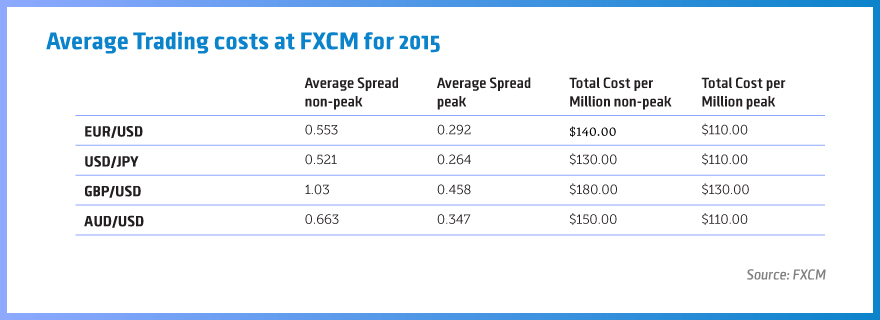FXCM Inc has published a new document, revealing what have been the trends regarding one of the key metrics which foreign exchange traders look at when choosing their intermediary. The average spreads between the bid and ask prices throughout 2015 which FXCM offers to its clients in major currency pairs have been analyzed and presented to the public.
The stats which the brokerage published are focused on 4 major currency pairs, which are probably the most traded in the industry - the EUR/USD, USD/JPY, GBP/USD and AUD/USD. The study encompasses average spreads throughout peak and non-peak market hours, since Liquidity conditions vary between different time zones.

The company has gathered data, which only includes data gathered from its standard account clients who have deposited more than $2,000 and are classified under the no-dealing desk Execution platform.
For the purposes of the study, FXCM has defined the hours between 1am EST and 1pm EST as peak trading hours while those between 1pm EST and 1am EST have been marked as non-peak. The classification is largely accurate as the most liquid hours for the currency markets are usually during the extended London trading session.
Looking at the four major currency pairs in the study, the average spread was close to 0.3 pips on the EUR/USD, USD/JPY and the AUD/USD. Trading the GBP/USD was a touch more expensive at 0.5 pips during peak hours. During non-peak hours the spreads are looking higher - from 0.5 on the USD/JPY to a full pip on the GBP/USD.
Looking at these numbers might provide a new perspective for traders looking for the lowest possible costs. When we are looking at a commission based model against a spread based model where the full cost of the trade is included within the spread, some market making offerings might look more attractive at first sight.
FXCM has also provided a statistic for the percentage of time when spreads on the above-mentioned pairs is below 0.1 points - for the EUR/USD this is the case during 8.32 per cent of the time, for the USD/JPY the figure stands at 10.39 per cent, while for the AUD/USD with 5.11 per cent. Rounding up the statistics is the GBP/USD its at 2.75 per cent of the time.

















